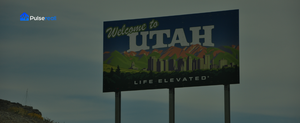Occupancy Rates Unveiled: High-Demand Lodging Markets Across the US
Understanding lodging occupancy rates is crucial for real estate investors looking for promising markets. This analysis dives into cities with high average occupancy, revealing potential opportunities for strong returns. We'll explore key metrics like Average Daily Rate (ADR) and Return on Investment (ROI) to provide a comprehensive overview.
Analyzing Occupancy and ADR Across Cities
Occupancy rate, a key indicator of lodging demand, varies significantly across different cities. For instance, Houston, OR, boasts an impressive occupancy rate of 89%, indicating a very high demand for lodging in that area. In contrast, Tampa, TX, shows a lower occupancy rate of 60%, suggesting a potentially more competitive market.
The Average Daily Rate (ADR) also plays a vital role in determining revenue potential. Denver, TN, commands a high ADR of $382, reflecting a premium lodging market. San Antonio, GA, on the other hand, has a lower ADR of $100, indicating a more budget-friendly market segment.
Detailed City-by-City Comparison
Let's delve deeper into specific cities and their lodging market dynamics:
Houston, OR: A High-Occupancy Hotspot
Houston, OR, stands out with an occupancy rate of 89%. This high demand translates to a strong potential for revenue generation. The ADR in Houston, OR, is $282, contributing to an estimated ROI of 12.07%. With 113 total listings, this market presents a concentrated opportunity for investors.
Denver, TN: Premium ADR and Solid Occupancy
Denver, TN, showcases a robust lodging market with an ADR of $382 and an occupancy rate of 86%. This combination results in an estimated ROI of 9.95%. The city has 382 total listings, suggesting a balanced supply and demand dynamic.
San Antonio, GA: Value-Driven Market
San Antonio, GA, offers a different perspective with an ADR of $100 and an occupancy rate of 70%. While the ADR is lower, the occupancy rate indicates steady demand. The estimated ROI in San Antonio, GA, is 13.97%. With 776 total listings, this market provides a wide range of options for investors.
Phoenix, NC: High Occupancy and ADR
Phoenix, NC, presents a compelling case with an ADR of $329 and a high occupancy rate of 86%. This combination leads to an estimated ROI of 15.45%. The city has 964 total listings, indicating a substantial market size.
Dallas, TX: Strong Occupancy and ROI
Dallas, TX, demonstrates a strong lodging market with an ADR of $310 and an occupancy rate of 82%. The estimated ROI in Dallas, TX, is 17.05%. With 653 total listings, this market offers a significant opportunity for investors.
Comparative Analysis: ADR and Occupancy
Comparing ADR and occupancy rates across cities reveals interesting insights:
- ADR Comparison: Denver, TN, leads with an ADR of $382, followed by Phoenix, NC, at $329, and Dallas, TX, at $310. San Antonio, GA, has the lowest ADR at $100.
- Occupancy Comparison: Houston, OR, has the highest occupancy rate at 89%, closely followed by Denver, TN, and Phoenix, NC, both at 86%. Tampa, TX, has the lowest occupancy rate at 60%.
Table: Occupancy and ADR Comparison
| City |
State |
ADR |
Occupancy Rate |
Estimated ROI |
| Portland |
AZ |
$295 |
65% |
15.64% |
| Denver |
TN |
$382 |
86% |
9.95% |
| San Antonio |
GA |
$222 |
61% |
7.37% |
| Seattle |
GA |
$180 |
64% |
8.55% |
| Houston |
OR |
$189 |
72% |
11.64% |
| Seattle |
TN |
$302 |
66% |
10.88% |
| Houston |
OR |
$282 |
89% |
12.07% |
| Tampa |
TN |
$113 |
75% |
9.08% |
| Phoenix |
CA |
$158 |
65% |
8.11% |
Investment Considerations
When evaluating lodging investments, consider the balance between ADR and occupancy. High ADR markets like Denver, TN, may offer premium revenue, while high-occupancy markets like Houston, OR, provide consistent demand. Understanding the local market dynamics and target audience is crucial for making informed investment decisions.
Conclusion
Analyzing occupancy rates and ADR provides valuable insights into the health and potential of lodging markets. Cities like Houston, OR, Denver, TN, and Phoenix, NC, demonstrate strong performance, offering attractive opportunities for real estate investors. By carefully evaluating these metrics and considering local market conditions, investors can identify promising locations for maximizing returns.



